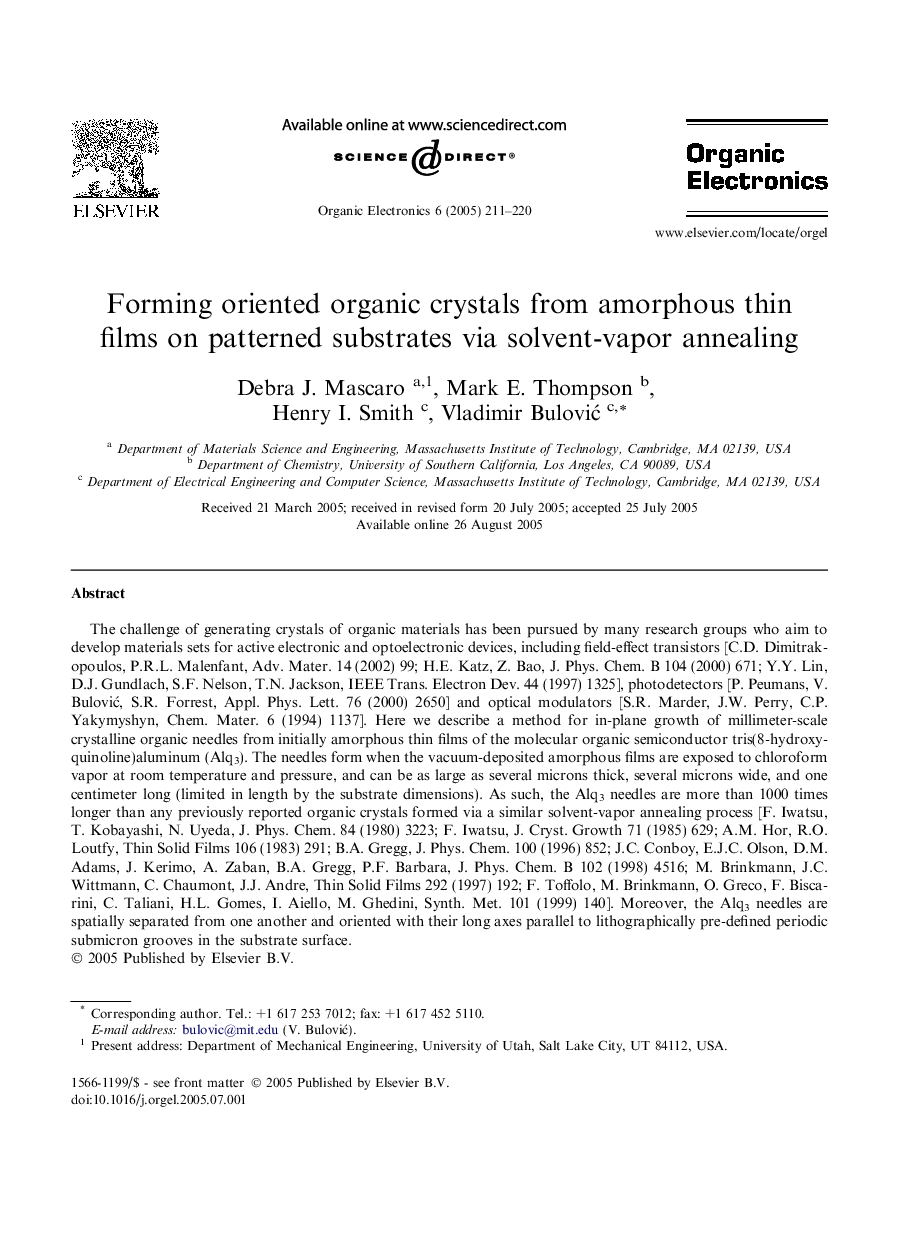| Article ID | Journal | Published Year | Pages | File Type |
|---|---|---|---|---|
| 9758775 | Organic Electronics | 2005 | 10 Pages |
Abstract
The challenge of generating crystals of organic materials has been pursued by many research groups who aim to develop materials sets for active electronic and optoelectronic devices, including field-effect transistors [C.D. Dimitrakopoulos, P.R.L. Malenfant, Adv. Mater. 14 (2002) 99; H.E. Katz, Z. Bao, J. Phys. Chem. B 104 (2000) 671; Y.Y. Lin, D.J. Gundlach, S.F. Nelson, T.N. Jackson, IEEE Trans. Electron Dev. 44 (1997) 1325], photodetectors [P. Peumans, V. BuloviÄ, S.R. Forrest, Appl. Phys. Lett. 76 (2000) 2650] and optical modulators [S.R. Marder, J.W. Perry, C.P. Yakymyshyn, Chem. Mater. 6 (1994) 1137]. Here we describe a method for in-plane growth of millimeter-scale crystalline organic needles from initially amorphous thin films of the molecular organic semiconductor tris(8-hydroxyquinoline)aluminum (Alq3). The needles form when the vacuum-deposited amorphous films are exposed to chloroform vapor at room temperature and pressure, and can be as large as several microns thick, several microns wide, and one centimeter long (limited in length by the substrate dimensions). As such, the Alq3 needles are more than 1000 times longer than any previously reported organic crystals formed via a similar solvent-vapor annealing process [F. Iwatsu, T. Kobayashi, N. Uyeda, J. Phys. Chem. 84 (1980) 3223; F. Iwatsu, J. Cryst. Growth 71 (1985) 629; A.M. Hor, R.O. Loutfy, Thin Solid Films 106 (1983) 291; B.A. Gregg, J. Phys. Chem. 100 (1996) 852; J.C. Conboy, E.J.C. Olson, D.M. Adams, J. Kerimo, A. Zaban, B.A. Gregg, P.F. Barbara, J. Phys. Chem. B 102 (1998) 4516; M. Brinkmann, J.C. Wittmann, C. Chaumont, J.J. Andre, Thin Solid Films 292 (1997) 192; F. Toffolo, M. Brinkmann, O. Greco, F. Biscarini, C. Taliani, H.L. Gomes, I. Aiello, M. Ghedini, Synth. Met. 101 (1999) 140]. Moreover, the Alq3 needles are spatially separated from one another and oriented with their long axes parallel to lithographically pre-defined periodic submicron grooves in the substrate surface.
Related Topics
Physical Sciences and Engineering
Chemistry
Chemistry (General)
Authors
Debra J. Mascaro, Mark E. Thompson, Henry I. Smith, Vladimir BuloviÄ,
